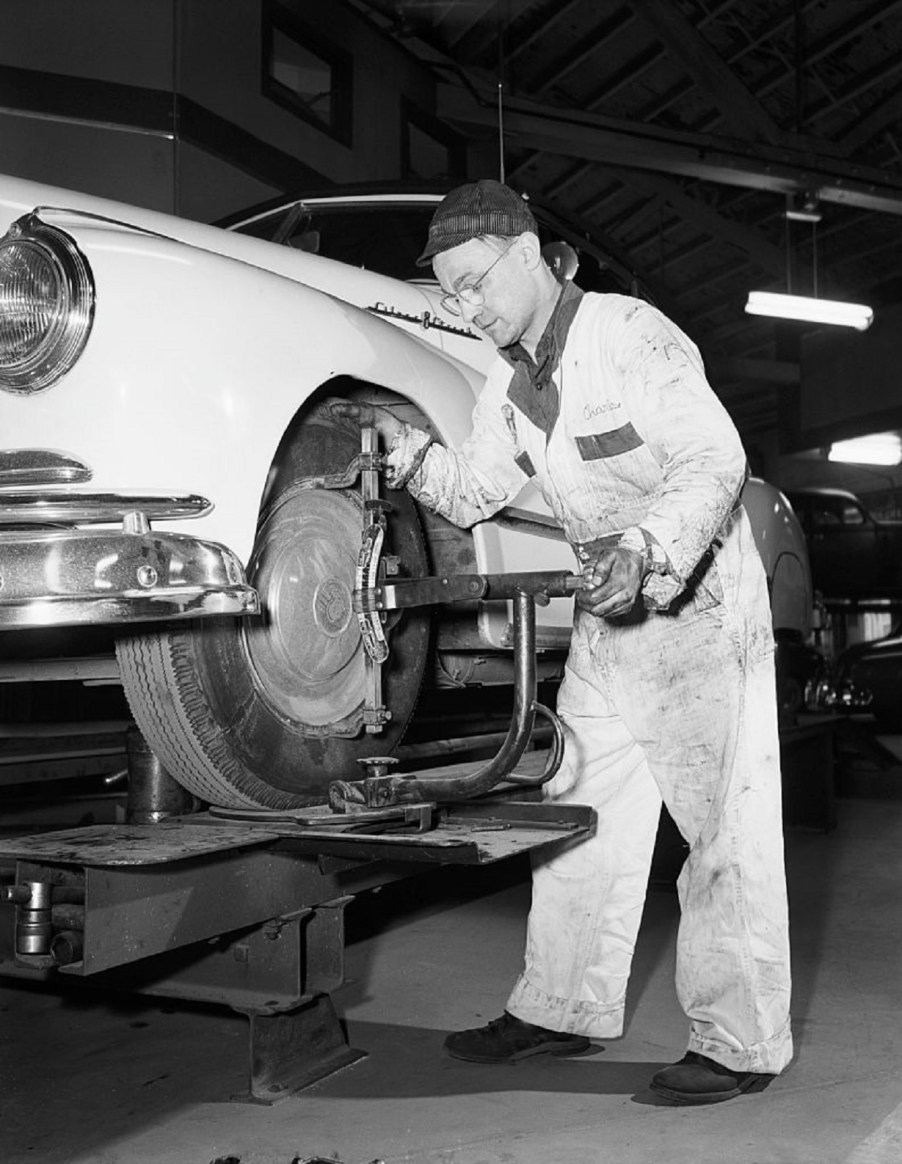
What Does a Wheel Alignment Do Exactly?
Driving wears away at your car, and not just through paint chips and scratches. Your tires work through friction, and eventually, they’re worn to the point they need replacement. Normally, that takes tens of thousands of miles, especially with regular rotation. But if you’re replacing your tires after just a few months, you may need a wheel alignment.
How do I know if I need a wheel alignment?
As you drive your car or ride your motorcycle, you’ll likely encounter potholes, bumps, and other imperfections. Your suspension and tires naturally help blunt the worst of the impact. But these impacts jar the suspension components from their ideal settings, Discount Tire explains. Once that happens, your wheels are out of alignment.
Think of it like using a wrench to unscrew a bolt. Even if it’s stuck at first, if you keep tapping or pushing on that wrench, the bolt will come loose. Replace the bolt with your suspension and the wrench with a pothole, and that’s what happens on the road. And sometimes, it doesn’t even take a pothole. If you lower your vehicle improperly, you also risk getting the wheels out of alignment, Tire Rack reports.
It’s recommended to regularly rotate your tires to keep them wearing evenly. But an out-of-alignment wheel causes uneven tire wear, Bridgestone explains. Sometimes it’s in the form of ‘feathering,’ when the tread is smooth on one side but sharp on the other. Or the tread might be more worn on the outside edges than in the center.
But it’s not just visual tire wear differences that can signal if your wheels need an alignment. Once the tires wear enough, they start affecting handling. The steering wheel may shake excessively, Firestone reports, because the wear has unbalanced the tires.
Or your vehicle may pull strongly to one side or another. If you’re trying to go straight, but you have to noticeably turn the steering wheel to do so, you need a wheel alignment. And it’s not just cars that need wheel alignments; motorcycles need them too, Motorcyclist reports.
What goes on during a wheel alignment?

A wheel alignment is sometimes called a ‘tire alignment,’ but they both refer to the same thing. Basically, adjusting your suspension back to its factory settings.
These settings boil down to changing 3 things, Hagerty explains—toe, caster, and camber. Toe is how much your tires point in or out horizontally. Camber is like toe but oriented on the vertical axis. And caster refers to the angle your steering’s upper and lower pivot points make with your tires’ contact patches. During a wheel alignment, technicians adjust the various suspension components until the toe, camber, and caster are back where they’re supposed to be.
It’s worth noting that a wheel alignment is separate from a wheel or tire balancing. However, the two are sometimes performed together. An alignment is about adjusting the suspension. Balancing the wheels and tires, though, is purely about the weight of the wheels and tires.
Can I do it myself?
It is possible to perform a wheel alignment on your own, Hagerty reports, using some string, and, for extra help, toe-in plates. Camber can also be adjusted on your own, Mobil reports, using an angle finder and a straight edge. Caster, though, involves adjusting chassis components and is best left to professional technicians.
However, a DIY wheel alignment can take several hours, if not longer. The string and angle finder method is best used to check, rather than adjust, alignment. It’s recommended you do so every 6000 miles or so, roughly when you change your oil. It’s usually best to take your car or bike to a mechanic or specialist shop.
Follow more updates from MotorBiscuit on our Facebook page.


